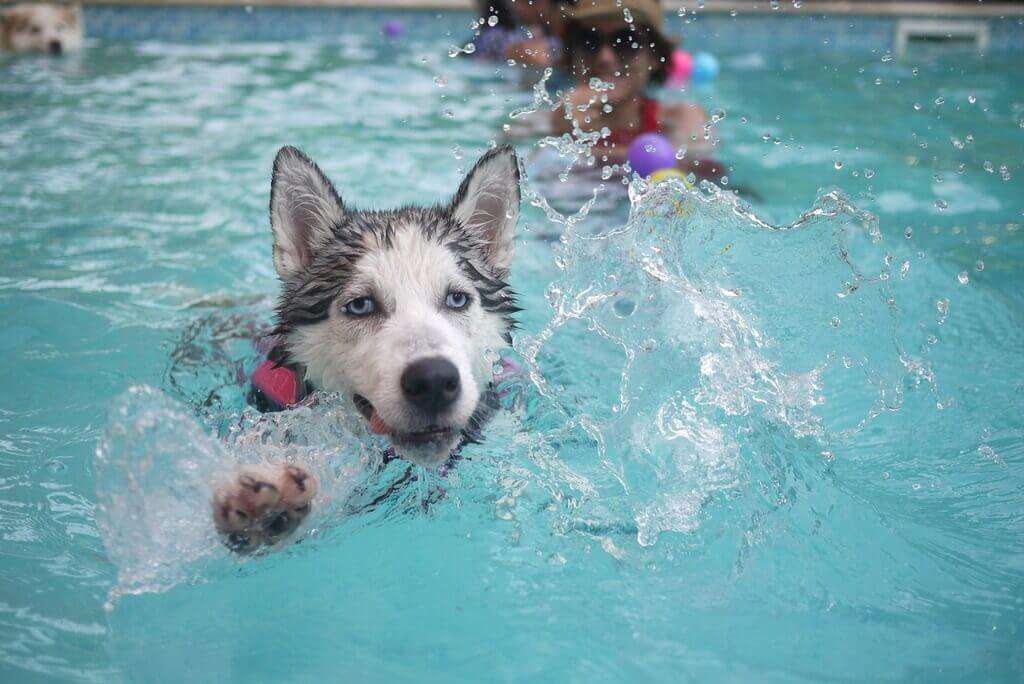
Pool Safety – How To Make Your Pool Pet Safe
Pool Safety – How To Make Your Pool Pet Safe
Pool danger is a real thing for pets. Compared to humans, pets are more prone to drowning and other pool dangers. If not taken care of with proper safety instructions around your pool, you may have to see your pet drowning without your knowledge.
To improve safety and protection for pets around the pool, Pool Builders of Melbourne will help you build a quality fence. However, you have to take extra precautions for each kind of pet so they do not accidentally slip or drown in the pool. As cats and dogs can jump onto the barriers and reach the other side without any problem, the fencing should be high enough for them to be safe from drowning in the pool water.
Additionally, you cannot completely restrict the entry of pets into the pool as they need to be refreshed with fresh water during the hot summer months. Just like humans, pets also want to feel lively and cool from time to time.
So, if you have a pet like a cat or dog and are planning to have a pool at your home, here are the safety precautions you should follow for pool safety. Before we dive in, let’s understand the risks involved when you do not make your pool safe for your pets. Pool safety – how to make your pool pet safe.
Risks involved
The primary dangers associated with pools for pets are:
-
Drowning
Drowning may not bother you much as all dogs are instinctively natural swimmers, right? However, there are certain exceptions to this rule.
Dogs of certain breeds are not good at swimming. You should understand this rule before you go buy one or want to know what kind of dog you have. Dog breeds with flat noses, short snouts, and short legs find it difficult to swim and they don’t float for as long as you expect them to.
Also, if you have a puppy or dog that is elderly, then you shouldn’t keep them near your swimming pool. Age-appropriate safety should be given to these pets or you should monitor them every minute to save them from any unfortunate accidents.
Finally, pets suffering from certain diseases like respiratory issues, arthritis, dementia, etc., should be monitored always when you are letting them near the pool.
If you have any pet dog or cat with the above-mentioned issues, then it’s important to know swimming pool safety instructions thoroughly.
- Ingestion of pool chemicals
You have to treat the pools with chlorine and bromine to keep the bacteria and algae from breeding. If not, swimming pool water becomes toxic to you and your pets if ingested even in small quantities.
While it’s necessary to treat water, you shouldn’t overdo it. Chemically treated pools are safe as long as you are putting the chemicals in the right proportion. If you are not doing it properly, pets may ingest the chemicals and it could be fatal for them.
- Heat stroke
Source
Dogs and cats don’t have as many sweat glands as humans do and their temperature regulation is not of the same level as humans. If they spend the whole afternoon in the water under the hot sun, their temperature could quickly rise which could lead to heat stroke.
Check for these signs of heat stroke in your pet:
- Excessive panting
- Drooling
- Vomiting
- Weakness, stumbling
- Collapse
- Having seizures
If you notice these signs in your pet, then immediately give first aid and take it to the veterinary doctor.
Making your pool safe
Now that you understand the risks, here is how you can make the pool safe keeping in mind about the risks:
- Conduct a swim test on your pet and keep them at your arm’s length to know their abilities. Accordingly, you can give them practice to keep them strong swimmers.
- Install a long safety fence around the pool and if possible, install an alarm to it. Fencing is the first barrier that you can put around the pool for safety.
- Train your pet to use the stairs to go in and out of the pool. While they may jump in enthusiastically, getting out should not be a problem if they use the steps.
- Always invest in a quality life vest for your pet. It helps them from drowning in case they panic or feel unwell.
- Always be with your pet or at least ensure that they are monitored well all the time. You can save them from accidents if you are vigilant.
- Make sure to lock the pool chemicals in a place where they are completely inaccessible to your pets. Full-strength chemicals are dangerous to your pets if exposed or ingested.
- While swimming, don’t let the pets drink in pool water. While it’s safe to ingest a small amount, large quantities may upset the pet’s stomach and cause vomiting or diarrhoea.
- After swimming, make sure to rinse your pet to remove the residue of chemicals. Fresh water keeps the pet’s skin safe from irritation or allergies.
- If it’s too sunny, let your pet take a break from the exposure to sunshine. Continuous exposure may result in heat stroke.
- Make sure you are maintaining the pool properly and changing the water once in a while. Read the swimming pool maintenance guide so that the pool water is always hygienic and fresh for the pets.
Final thoughts
Pool safety is not only important to your kids but also to your pets. Make sure to follow the safety rules properly before you let your pet free near the pool. It’s always recommended to have someone to watch over your pet at all times while they are swimming. Because the most trained pets may panic or feel unwell and may drown unconsciously. To avoid those mishaps, be vigilant and take care of your pets while they enjoy pool water and are getting some exercise.















